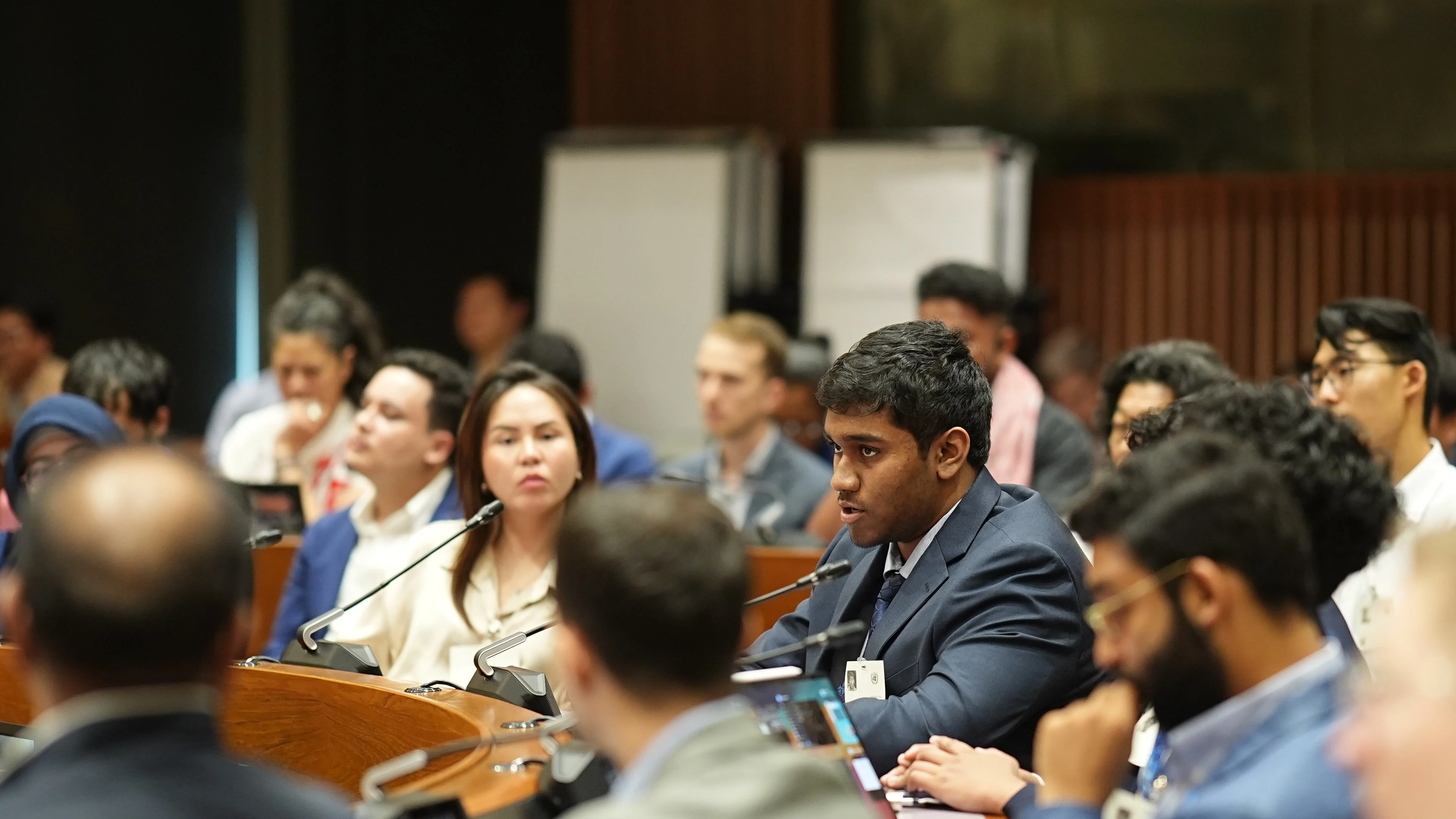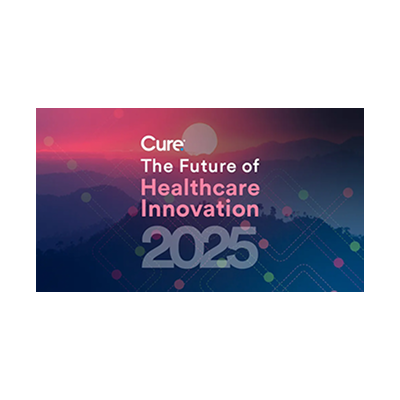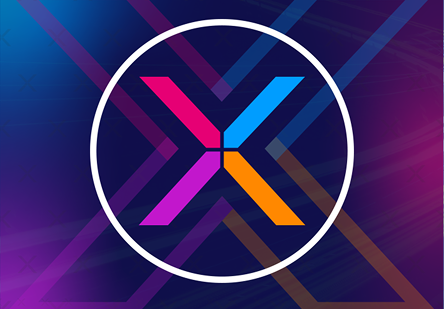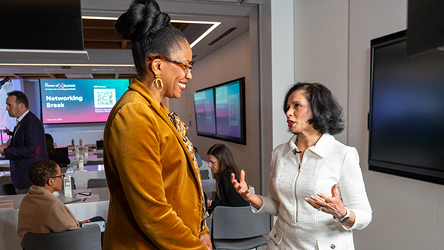July 22, 2025
Article
How a Teen Turned His Rare Diagnoses into a Rare Movement

Overview
16-year-old entrepreneur Khartik Uppalapati, co-founder of the RareGen Youth Network, is combining AI innovation and advocacy to reshape how rare diseases are diagnosed and addressed globally.
Diagnosed at 12, Khartik Uppalapati is a next-gen leader in healthcare
At an age when most kids are adjusting to middle school, 12-year-old Khartik Uppalapati was navigating a maze of hospital visits, unanswered questions, and a pair of rare diagnoses that upended his life. By 16, he had co-founded the national nonprofit RareGen Youth Network and a global movement.
In 2021, Uppalapati was diagnosed with lymphedema, which causes severe swelling, and arteriovenous malformations of the hip, a rare condition that occurs when blood supply to the ball of the hip joint is disrupted. Both conditions are so uncommon that even experienced physicians struggled to explain why Uppalapati developed them.
“Dealing with both at the same time was very difficult, especially given the context of the global [COVID-19] pandemic. A lot of doctors weren’t available to even meet with me,” Uppalapati told Cure in an exclusive interview.
After visiting eight doctors at multiple hospitals across the United States, he finally got some answers. However, doctors couldn’t pinpoint the reason why he developed lymphedema because the condition is usually connected to cancer-related procedures.
Doctor’s surmised that Uppalapati’s condition is genetic, placing him among a tiny subset of patients for whom answers are even harder to come by.
“[My treatments] have been symptom-focused because we still don’t know the root cause,” he said. “Even now, getting reliable information is incredibly difficult.”
Leaning on His Interest in STEM to Create Answers and Support
As Uppalapati navigated his diagnosis in middle school, he leaned into his love of STEM to find answers, which also set him on his path as an entrepreneur.
“Finding a way to bridge both parts of my life--my academic interests and my life experiences-- was something I was really focused on,” he said.
Being stuck at home during the pandemic pushed him to delve into online resources about biotech, pharma biology, and medicine.
“I was able to use biotech and computational biology to advocate for myself while challenging myself intellectually and gaining more knowledge, which I was very passionate about back then,” Uppalapati said.
He also turned to patient support groups for people living with rare diseases, and attended patient advocacy conferences within the rare disease world.
“What I noticed was…a lot of the people who had the chance to talk and make decisions were very old relative to those who are the most represented within their disease communities,” he said.
Because almost 70 percent of rare diseases present in childhood, he felt a disconnect to those advocating for rare disease patients.
“I wanted to bridge that gap by creating a platform where the youth with rare diseases--the people who make up the largest demographic within the rare disease community--are able to have a chance to advocate for their specific needs, provide their specific experiences, and get a chance to become important stakeholders at these conferences, scientific events, and patient advocacy events that truly do affect them,” said Uppalapati.
RareGen is Born Out of a Passion to Help Others
Uppalapati teamed up with fellow teens Eeshan Dandamudi, who lives with eosinophilic asthma and a rare eye condition, and Viraj Kamath, who was born with the ultra-rare liver disease PFIC 4 to form RareGen, a youth-led nonprofit built on the foundation of shared experiences and a passion for making a difference.
“Initially we started out as a patient advocacy network where we had a few chapters in the Northern Virginia, Maryland, and DC area,” said Uppalapati.
They mainly focused on creating and streaming educational events for the general public to learn more about rare diseases. As they gained interest, they expanded into political and scientific advocacy, and to technology development.
“Now, we’ve expanded to doing work at a more abstract and higher level like scholastic advocacy where we’ll write reports on the current state of the rare disease community and what needs to be done,” Uppalapati said.
Advocacy for Rare Diseases on Global Scale
They’ve presented their findings to the United Nations, European Union, and US government, as they advocate for policy changes to improve healthcare access and treatment for rare disease patients, medical device regulations, health technology assessments, environmental health, and labor rights.
“We also work on the research side and were published in over eight different conferences so far, some of them being the top conferences within the medical AI space such as IEEE NER,” said Uppalapati.
Today, they have a global network with more than 400 volunteers, an advanced scientific research team, and multiple partnerships with policymakers, universities, and healthcare institutions.
Using AI to Speed Up Diagnoses of Rare Diseases
The first scientific tool that the RareGen team developed is called NeuroAssist, designed to speed up neurological data processing for clinicians working with rare disease patients.
“It allows us to process neuro signal information more clearly and at a faster rate so that we can use that tool to speed up existing disease diagnostic methods and tools,” Uppalapati said. “Right now, there’s a lot of tools, but these tools are very slow and inefficient. NeuroAssist is really meant for clinicians to use within their workflow to improve the patient experience.”
So far, the RareGen team has developed around 14 different technologies, including digital diagnostic tests aimed for use by patients.
“The biggest problem within the rare disease research space, especially from the scientific pharma of biotech angle, is there’s a very limited amount of data,” he said. “It’s really hard to engage people to share data on their rare disease that could help inform better technologies and scientific research.”
To solve this, his scientific research team created BioRare, a biomarker identification tool that uses limited data and advanced AI models to get more accurate information about biomarkers for rare diseases.
“It bridges the main gap within the rare disease research space right now,” Uppalapati said.
Navigating Funding, IP and Regulatory Logistics Like an Adult
Uppalapati plans to tackle IP next.
“Naturally, now that our science is out there, it’s been peer reviewed. I think the next step is getting it to clinicians, so as part that we’re working to patent a lot of our technologies in the immediate future, especially this year,” he said.
To fund his work, over the years, he obtained grants from small companies and pharma venture companies.
“In the future, we hope to get more grants to fund our ventures,” he said.
Challenges he faces include determining how to use profits, ensuring his operations align with his mission, and navigating the FDA's 501(c)(3) process. Recruiting qualified AI engineers and AI scientists who have the skillset to develop his models is another obstacle.
“The crux of our work is incredibly difficult because we’re trying to take limited data and make it into large generalizable observations and provide a baseline to work,” said Uppalapati. “Our disease AI models have to be very specific in the way they’re made and very well thought out, so that requires a lot more planning and expertise than other AI models.”
Being a non-profit with less-enticing benefits adds to the difficulty of recruiting. His ideal employees are those who take pride in the social good that comes from their work.
“Our researchers make a large impact in the regularity space overall by providing open source data for people to use,” he said.
Establishing a solid management team is a goal, too. Right now, he has small independent sub-teams and hopes to eventually have one strong executive team.
Along the way, he has consulted with existing patient advocacy organizations such as Rare Diseases International and experienced leaders at patient advocacy organizations. While these organizations may be viewed as competitors, he says he considers them collaborators.
“We’ve bounced ideas back and forth to see if there’s any places for collaboration, which really helped us,” he said. “They also give insight on management structure and more.”
Science Backs a Movement with Meaning
Despite the scientific complexity of his work, at just 16 years old, Uppalapati has a clear focus of his continued mission. He views RareGen and his scientific innovation as a movement.
“There’s not a rare disease advocacy scene that’s really mainstream right now. Our goal is to push early advocacy into becoming mainstream as part of a movement,” he said.
He met his co-founders and several directors at the first few conferences he attended for patient advocacy. Immediately upon hearing his idea for RareGen, he said they shared the same passion.
“The novelty and the impact of making a movement for rare diseases was something that resonated with them initially, and pulled them into dedicating their work to the origin,” said Uppalapati.
He hopes RareGen helps spread that passion until in “every household there’s at least one person thinking about rare diseases in the same way that people think about climate change or the housing crisis, or other large movements that have become mainstream,” he said.
As he continues to push this movement forward, he is finishing up a summer internship at Princeton University, where he works on molecular modeling for life science applications. In August, he will enter his last year of high school, and after graduation plans to attend college to study life sciences, chemistry, and public health.
He said the benefit of being passionate about work at a young age is the exposure to challenges early on that lead to insights. Being a young advocate can bring bigger impact, he added.
“People are interested in what you have to say. There is positive reception that comes with youth advocacy that allows you to grow your impact, which may not be as accessible when you’re at an older age when there’s a lot of people trying to make an impact at the same time,” said Uppalapati.
While RareGen started due to his personal connection to rare diseases, he is proud of its impact on others living with rare conditions, as well allies who support them.
“A lot of our members don’t have rare diseases. They want to spread rare disease advocacy out of genuine interest,” said Uppalapati. “That would be something that was almost unheard of three years ago prior to our work. Seeing that there’s youth who are genuinely getting involved in the space and generally care about the issues is very gratifying.”





